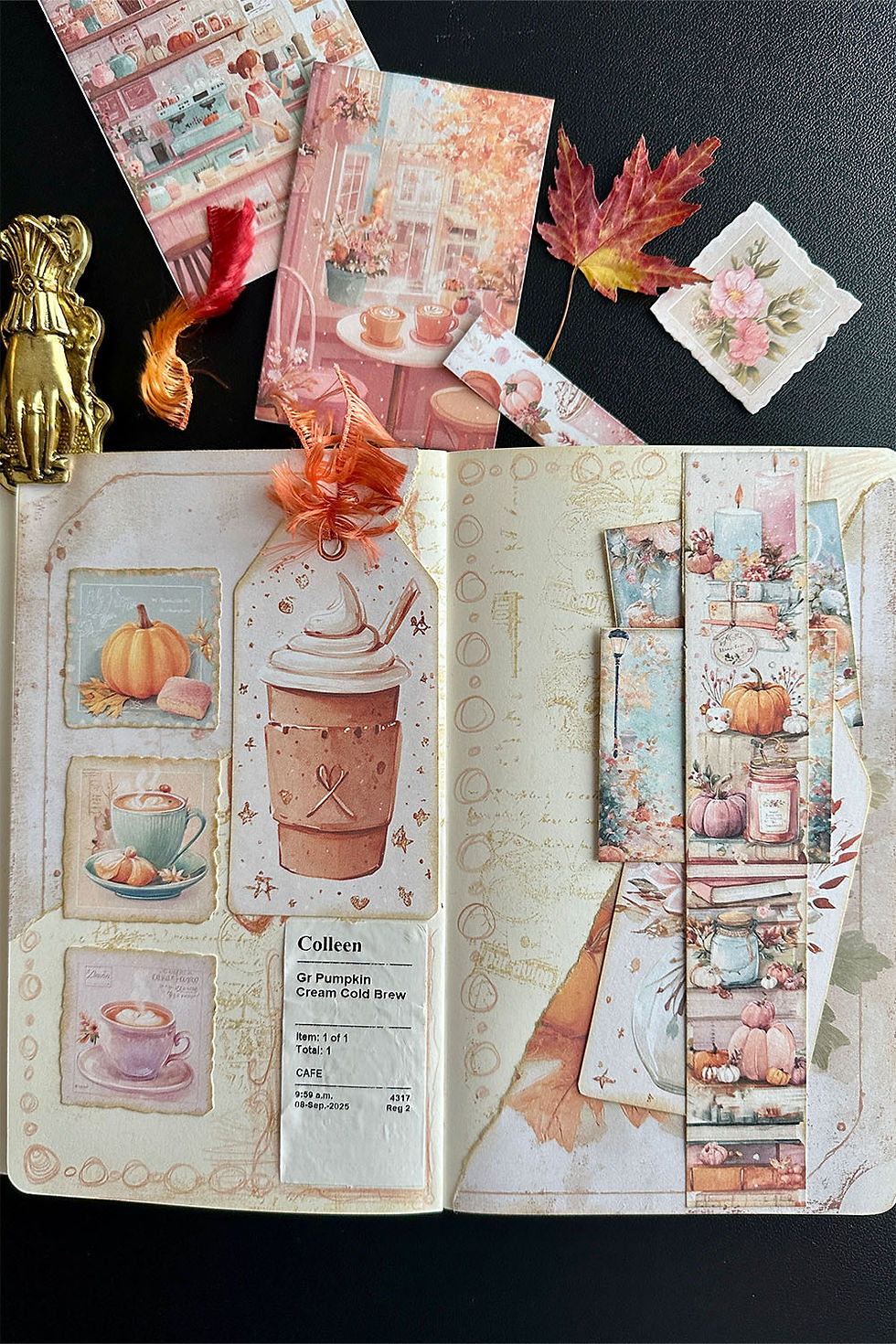Simple Design for Beautiful Junk Journal Pages
- Colleen McCarthy

- 2 days ago
- 3 min read
When you sit down to make a junk journal page, it can be hard to know where to start. You’ve got scraps, photos, tags, stickers, envelopes, and pretty paper. But how do you bring it all together?
Some simple design principles can help you create beautiful pages. Start with the composition of your page. Composition is the artsy word for how you arrange your elements.
Good composition makes a page feel balanced and complete. It guides the eye around the page and creates a soft flow between all the bits and pieces. It also helps you tell a story or set a mood, even if you’re just using scraps from your desk.
This article may contain affiliate links. This means that I might earn a small commission if you make a purchase, at no extra cost to you.

Basic Design Principles for Junk Journal Pages
You don’t need to know design theory to make a page that looks good. A few simple ideas can make a big difference:
Balance
If one side of the page feels heavy, add something to the other side to even it out. This could be a small tag, a strip of washi tape, or a cluster of embellishments.
Focal Point
Choose one main element to draw the eye. This could be a photo, label, image, or illustration. Build the rest of the page around it.
White Space
Not every inch needs to be filled. A little breathing room lets your main pieces shine.
Repetition
Repeating colors, shapes, or textures ties everything together. Even a strip of the same washi in two spots can make a page feel finished.

Common Page Layout Styles
Here are a few easy page layout styles that work well for junk journals:
Cluster Layout
Gather a few elements in one area, like a corner or center of the page. It creates a strong focal point with a soft, layered look.
Grid Layout
Arrange your pieces in even sections. This works well with photos, journaling cards, or labels.
Collage Layout
Layer and overlap pieces at different angles. This is great for using scraps and gives a collected, vintage feel.
Vertical or Horizontal Strip
Place your main elements in a line down or across the page. It’s simple but has a strong visual impact.
Framed Focal Point
Pick one large image or element for the center. Add soft layers, textures, or borders around it.

Supply List
To make this layout I used some of my printable papers and kits to showcase my favorite flower themed photographs. Here's everything I used on the page:
Printable photo set Flower Market Themed.
Printable paper from the Herb Garden Paper Set and the Vintage Rose Paper Set.
Pink and Blue Printable Stickers from my Free Membership Area.
Cardstock in Pale Blue.
Distress Ink in Antique Linen.
Ranger brand Ink Blending Tool.
Easy Tips for Strong Composition
Give these tips a try, next time you're creating a page:
Work with odd numbers. Three or five elements often look more natural than two or four.
Layer different textures like lace, fabric, or vellum for more depth.
Repeat a color, shape, or pattern in more than one place on the page.
Step back and squint at your page. If it feels lopsided, add or shift something until it flows better.
Building a Page with What You Have
You don’t need new supplies to create a well-composed page. Tags, packaging, tickets, old book pages, or envelopes can work beautifully. Play around with placement before gluing anything down. Let your eye guide you.
Composition gets easier the more you create. Over time, you’ll find your own rhythm and style.
Have Fun
Good composition doesn’t mean following strict rules. It’s about creating balance, flow, and a feeling you love. Start with one simple layout or design principle on your next page and see how it changes the look.
Pin this article to save it for later:






Comments